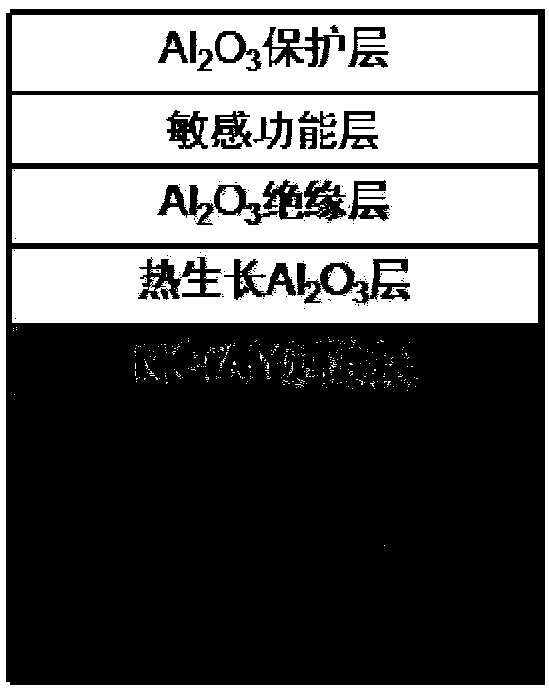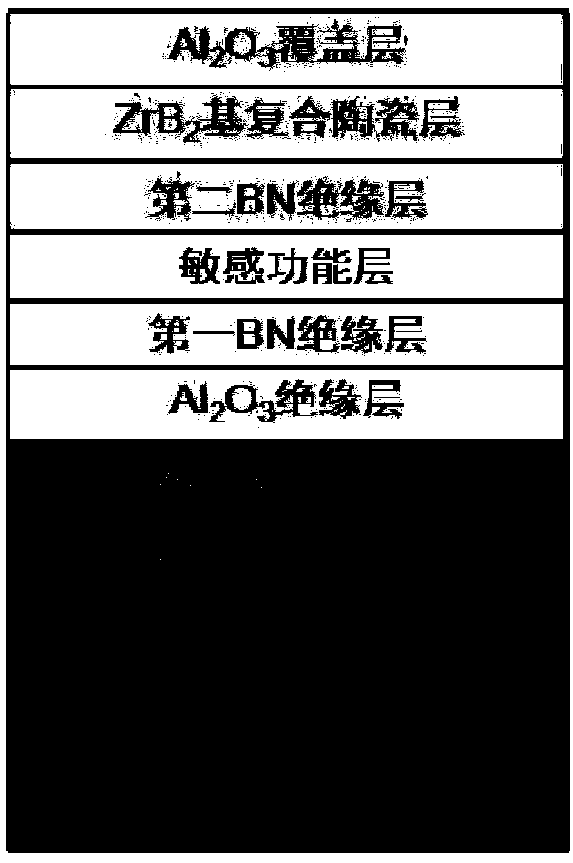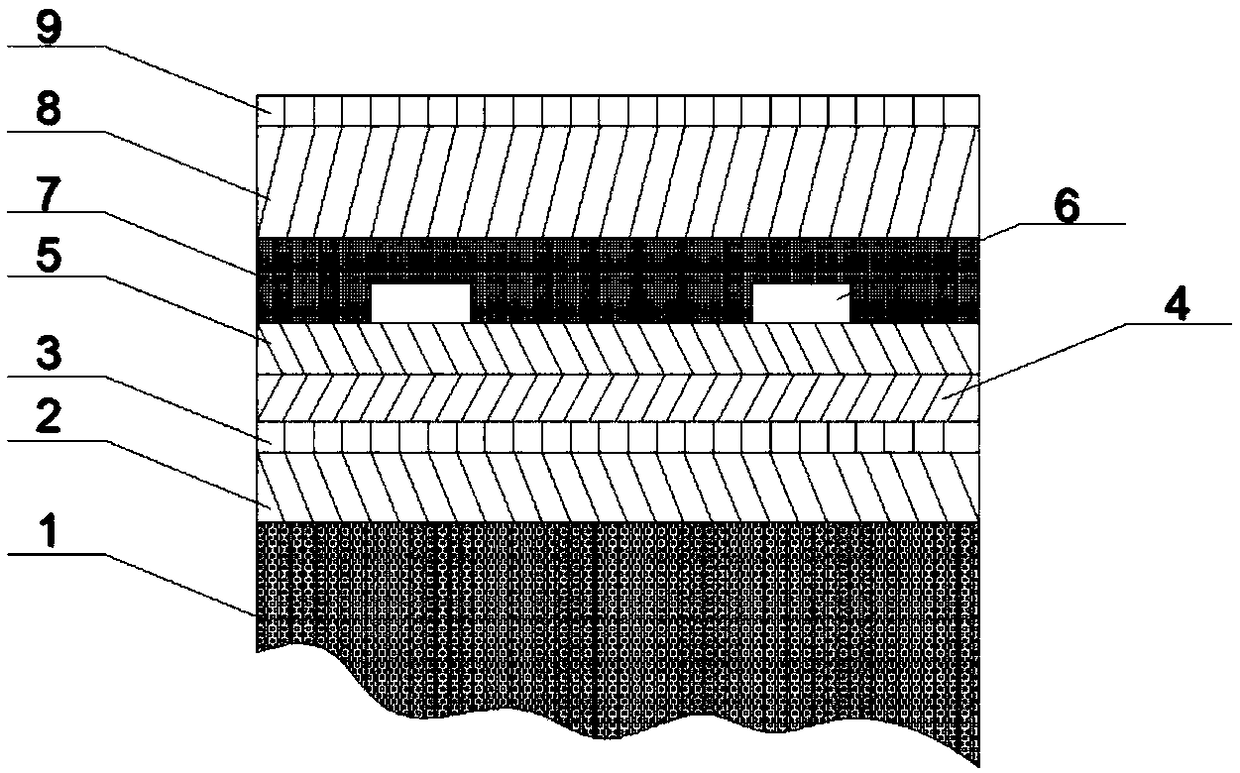A kind of anti-oxidation composite protective layer for high temperature film sensor and its manufacturing method
A thin-film sensor and anti-oxidation technology, which is applied in coating, protection equipment, high-efficiency propulsion technology, etc., can solve the problems of device failure, reliability reduction, application temperature range limitation, etc., achieve excellent high-temperature insulation performance, meet insulation requirements, Effect of High Resistivity
- Summary
- Abstract
- Description
- Claims
- Application Information
AI Technical Summary
Problems solved by technology
Method used
Image
Examples
Embodiment
[0038] like image 3 As shown, the sectional view of the tungsten-rhenium thin film sensor based on the anti-oxidation composite protective layer of the present invention provided for the embodiment; from bottom to top are Ni-based alloy substrate 1, NiCrAlY alloy transition layer 2, thermal growth Al 2 o 3 Layer 3, Al 2 o 3 Insulating layer 4, first BN insulating layer 5, tungsten-rhenium thin film thermocouple positive and negative electrodes 6, second BN insulating layer 7, ZrB 2 matrix composite ceramic layer 8, Al 2 o 3 Overlay 9.
[0039] The preparation method of the tungsten-rhenium thin film sensor based on the anti-oxidation composite protective layer of the present invention provided in the embodiment specifically includes the following steps:
[0040] Step 1. Surface treatment of the Ni-based alloy substrate: first, polish the surface of the Ni-based alloy substrate, then use industrial degreaser, acetone, alcohol and deionized water to ultrasonically clean t...
PUM
| Property | Measurement | Unit |
|---|---|---|
| thickness | aaaaa | aaaaa |
| thickness | aaaaa | aaaaa |
| thickness | aaaaa | aaaaa |
Abstract
Description
Claims
Application Information
 Login to View More
Login to View More - R&D
- Intellectual Property
- Life Sciences
- Materials
- Tech Scout
- Unparalleled Data Quality
- Higher Quality Content
- 60% Fewer Hallucinations
Browse by: Latest US Patents, China's latest patents, Technical Efficacy Thesaurus, Application Domain, Technology Topic, Popular Technical Reports.
© 2025 PatSnap. All rights reserved.Legal|Privacy policy|Modern Slavery Act Transparency Statement|Sitemap|About US| Contact US: help@patsnap.com



